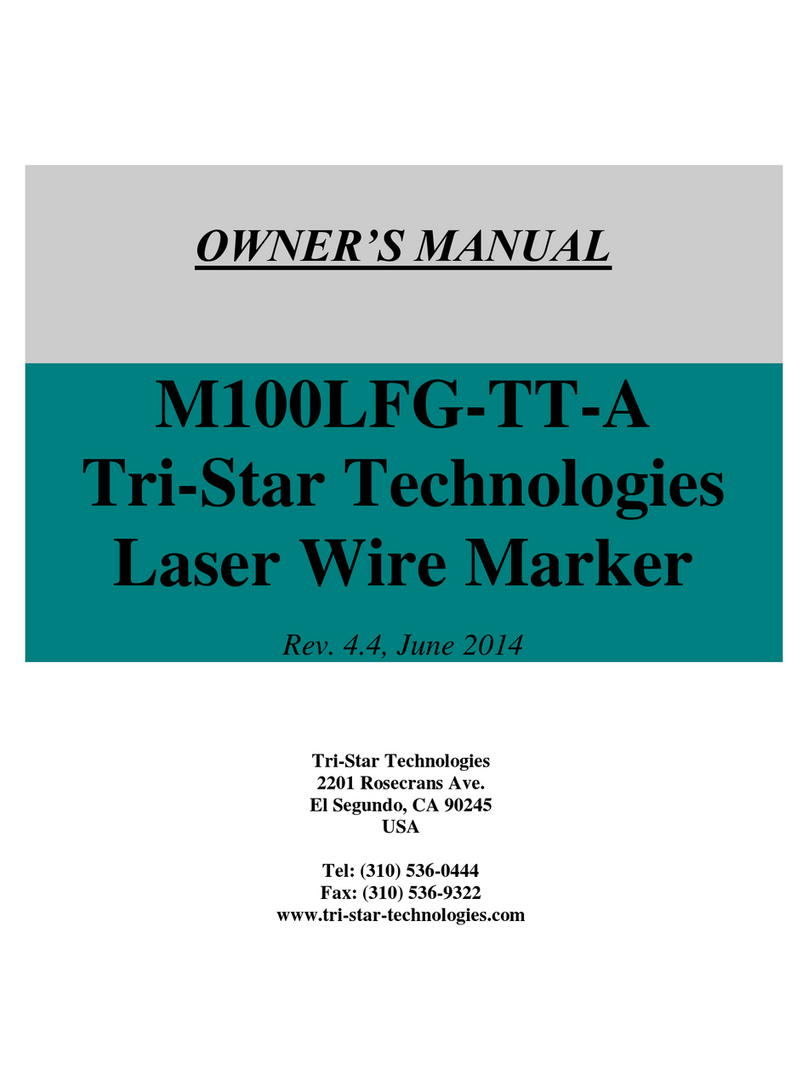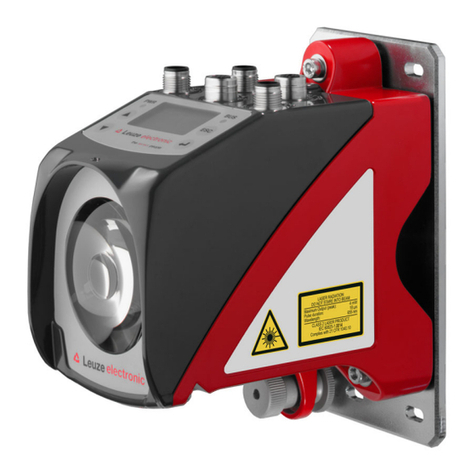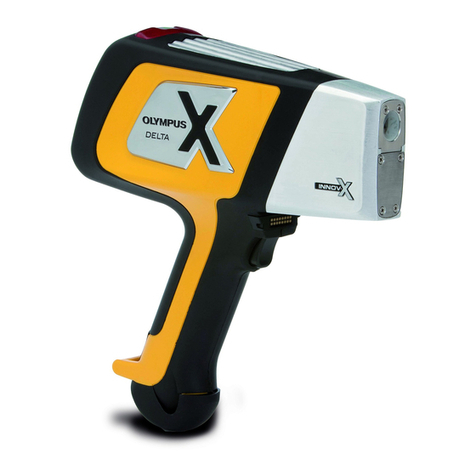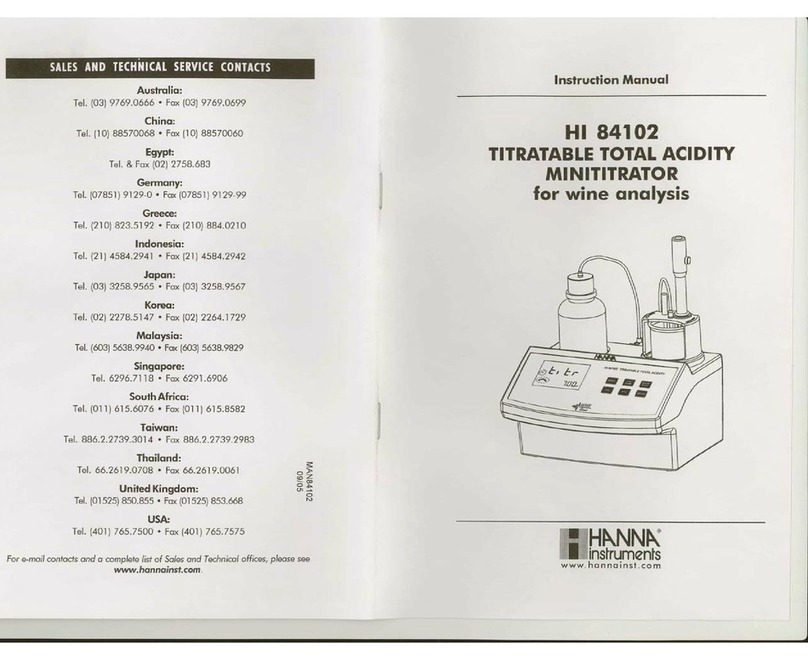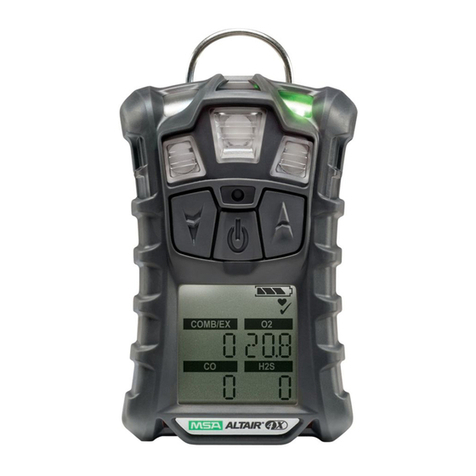TriStar M100LFG-TT/150 User manual

OWNER’S MANUAL
M100LFG-TT/150
Tri-Star Technologies
Laser Wire Marker
Rev. 1.0, October 2016
Tri-Star Technologies
2201 Rosecrans Ave.
El Segundo, CA 90245
USA
Tel: (310) 536-0444
Fax: (310) 536-9322
www.tri-star-technologies.com

2
Contents
1. INTRODUCTION ...................................................................................................................... 4
2. SAFETY ..................................................................................................................................... 5
2.1 Hazards associated with laser equipment.............................................................................. 5
2.2 Hazards associated with wire cutting equipment .................................................................. 7
3. UV Laser Marking...................................................................................................................... 8
4. Equipment Description ............................................................................................................ 14
4.1 Laser and Utility Module..................................................................................................... 16
4.2 Water Cooling System......................................................................................................... 19
4.3 Beam Scanning System....................................................................................................... 20
4.4 Wire Pulling Mechanism and Coiling Pan.......................................................................... 21
4.5 Operator Work Station......................................................................................................... 24
5. Wire Processing........................................................................................................................ 25
6. Installation................................................................................................................................. 26
7. Maintenance and Troubleshooting............................................................................................ 27
8. Spare Parts List........................................................................................................................ 28
9. Software User Guide................................................................................................................. 29
9.1 Setup.................................................................................................................................... 36
9.2 Default Font......................................................................................................................... 37
9.2 Offsets.................................................................................................................................. 38
9.3 Parameters ........................................................................................................................... 40
9.4 Scanner Settings .................................................................................................................. 42
9.5 Laser Configuration........................................................................................................ 44
9.6 Energy Offset....................................................................................................................... 46
9.6. Import/Export ..................................................................................................................... 48
9.7 Barcodes .............................................................................................................................. 50
9.8 Calibration........................................................................................................................... 51
9.9 About................................................................................................................................... 53
10. Marking parameters. .......................................................................................................... 55
10.1 Laser Power....................................................................................................................... 55
10.2 Scanner parameters............................................................................................................ 56
10.3 Font and character size...................................................................................................... 57
10.4 Laser beam footprint (dot size).......................................................................................... 59
10.5 Contrast and the wire types. .............................................................................................. 60
11. Laser shipping instruction...................................................................................................... 61

3
12. Mechanical Diagrams ........................................................................................................ 63
13. Electrical Diagrams............................................................................................................ 66
14. List of Appendices............................................................................................................. 73

4
1. INTRODUCTION
The M100LFG-TT/150 is a computer-controlled, Ultra-Violet Laser Wire and Cable
Marker and Processor. The system marks the wire pulled from a spool then cuts and coils it to
specified lengths. Precise heavy-duty pulling mechanism consists of two working in sync stepping
motors and pneumatic cutter. The cut wire exits the machine and is automatically coiled for easy
handling. XY scanning beam technology allows marking with different fonts, sizes, orientations
and print densities. Standard software package has number of fonts for English language, barcode
3 of 9 and some other symbols. Special symbols and foreign languages may be supported per user
request.
The M100LFG-TT/150 is fully programmable. The program routines include set up and
adjustments of pulling and cutting processes, laser and scanner parameters, marking patterns, etc.
When malfunctions occur, the process stops automatically and specified error message appears
on the screen.
A marking task consists of entering message, separate space between the messages and
cutting length for each wire, and also selecting a font, size and print density. The task is loaded
to a dedicated computer from keyboard, CD, memory stick, or through the Local Area Network.
Then it can be stored in the system memory and accessed any time needed.
These features enable the M100LFG-TT/150 to automatically mark large batches of
wires for mass production. They also enable cost-effective production for individual harnesses
without expensive machine changes between kits.

5
2. SAFETY
This chapter briefly describes safety issues associated with M100LFG-TT/150 Laser
Wire Marker and provides guidelines to operate the machine in a safe manner.
WARNING !!! Only qualified personnel should have access to the machine.
The user must be familiar with all technical aspects of the machine’s operation and have
a good knowledge of the operating software. Service and maintenance of M100LFG-TT/150
require proper technical training and understanding of potential hazards to which personnel may
be exposed. This manual is intended to be a supplement but not a replacement to this training.
2.1 Hazards associated with laser equipment
M100LFG-TT/150 contains internal and external interlocks to assure safe operating
conditions. Normally the laser beam is completely enclosed within a cabinet. The laser shuts off
automatically if any door or cover is open.
Service work, performed by OEM,including installation and calibration procedures, may
require access to the laser and other optical components. The unenclosed beam should be
contained within a specified region by adequate control measures. Temporary control area may
be required to prevent personnel in the vicinity of the laser or its emitted beams from radiation
exposure. Consideration should be given to direct, reflected and scattered radiation.
Warning !!! M -100LFG-TT/150 contains CLASS IV High Power Laser.
Directbeam contact or exposure to diffuse reflection is
hazardous to the eyes and skin and can also be a fire hazard
Warning !!! Allinstallation and maintenance procedures should be
conducted by specially trained personnel
Warning !!! Always work in low power mode when dealing with open laser
radiation
Warning !!! Always wearlaser safety glasses whenworking with an open
laser beam
The invisible ultra-violet pulses of coherent light emitted from this laser are capable of
inflicting permanent eye damage and total blindness. The beam can burn skin tissue and may
cause ignition of chemicals on some common materials. If possible, perform laser work in a light
tight room with safety interlocks.

6
Laser Safety Labels and Their Locations:
Warning Logotype
LASERRADIATION
AVOID EYEOR SKIN EXPOSURE
TO DIRECT OR SCATTERED RADIATION
CLASS IV LASER PRODUCT
Max. Output Energy(mJ) 0.1
Max. Output Power (W) 2.1
Wavelength (nm) 355
CLASS IV LASER PRODUCT
Certification Label
Interlock Label
LASERRADIATION
AVOID EYEOR SKIN EXPOSURE
TO DIRECT OR SCATTERED RADIATION
CLASS IV LASER PRODUCT
Max. Output Energy(mJ) 0.1
Max. Output Power (W) 2.1
Wavelength (nm) 355
CLASS IV LASER PRODUCT
Electrical hazards (e.g. electric shock) may occur from contact with exposed power
supply or device control conductors operating at potentials of 50 V and above. These exposures
can occur during laser set-up or installation, maintenance and service, or any other time when
equipment protective covers are removed to allow access to active components.
Air contaminants may be generated when Class IV laser beams interacts with matter.
When the target irradiance reaches a given threshold (107W/cm2), target materials including
plastics, composites, metals and tissues may liberate airborne contaminants such as metallic
fumes and dust, metallic oxide fumes, chemical and gaseous vapours, etc. Some of the
compounds include: polycyclic aromatic hydrocarbons from poly-(methyl methacrylate) type
polymers, hydrogen cyanide and benzene from aromatic polyamide fibres, benzene from
polyvinyl chloride, fused silica from quartz, etc. Three major control measures to reduce the
concentration of air contaminants are exhaust ventilation, respiratory protection, and isolation of
the process.
Laser radiation when open and interlock defeated
AVOID EYE OR SKIN EXPOSURE
TO DIRECT OR SCATTERED RADIATION
This Laser Marker
Manufactured by Tri-Star Technologies
2201 Rosecrans Ave, El Segundo,
CA 90245
Complies with 21 CFR subchapter J
At the date of manufacturing
Max. Output Energy (µJ) 400
Pulse Duration (ns) 10-50
Wavelength (nm) 355

7
To operate the M100LFG-TT/150 in a safe manner:
•Permit only authorized personnel to operate the laser.
•Ensure that all personnel wear adequate eye protection during laser maintenance.
•Install appropriate signs and labels at site of laser operations.
•Use a continuing laser safety educational program for personnel operating the system
or others in the vicinity of the laser.
•Enclose the entire laser beam path when possible.
•Do not to operate without protective covers.
•Do not work with unenclosed laser beams at nominal mode.
•Do not exceed limit laser parameters specified in manual.
•Use beam shutters and laser output filters or beam traverse and elevation stops to
restrict beam interception on outdoor devices.
•Use dark, absorbing, diffuse fire-resistant targets and backstops where feasible. Avoid
exposure to scattered laser light reflected from optic elements, beam splitters,
entrance windows, beam analyzers, etc.
•Do not operate without grounding.
•Do not to introduce any changes into electric line or power supply.
•In the event of medical emergency, contact a doctor immediately.
REFERENCES:
1American National Standard for Safe Use of Lasers (ANSI Z136.1-1993)
2Laser Safety Guide, LIA, 1993
3LIA Guide to Non-beam Hazards Associated with Laser Use, LIA, 1999
4Guide for the Selection of Laser Eye Protection, LIA, 1996
5OSHA Instruction Pub 8-1.7
6IES 825, Radiation Safety of laser products, Equipment Classification,
Requirements and User’s Guide; Laser Safety Guide, Laser Institutes of America.
2.2 Hazards associated with wire cutting equipment
There are several potentially hazardous areas associated with cutting and stripping
equipment. These include exposed electrical current parts, the cutting and stripping blades area,
any moving parts of the machine such as wire feeding mechanisms, pulling rollers, swivel guide
and cutting head, and compressed air connections and nozzles.
It is dangerous to touch current-carrying parts. For service and maintenance purposes,
housings and covers may be removed only when the machine is stopped and main power is
switched off.
There is potential danger of being cut in the area around the blades. Always turn off the
machine before working on the cutting head or blades.
There is potential danger of being pinched in the area around the moving parts of the
machine. Always turn off the machine before working on the moving parts.
Only properly trained personnel familiar with all safety procedures are permitted to
operate the M100LFG-TT/150. Maintain and service the system.
Prevent unauthorized use of the system. It could be dangerous if improperly operated by
untrained personnel.

8
3. UV Laser Marking
Direct printing on wires and cables with Ultra-violet (UV) lasers has been extensively
tested and accepted within the aerospace industry both by OEMs and by the end users. It is
covered by a number of documents and standards issued by SAE International
(http://www.sae.org/ AIR5558, AIR5468B, AS5649) and reflected in the production
specification of large and small frame aircrafts for commercial, industrial, and military use. The
OEM list includes Boeing, Airbus, Lockheed Martin, Sikorsky, Gulfstream, Bombardier, Pilatus,
and many others. It is also used by the governmental agencies such as DOD, NASA, FAA, etc.
The end users employ UV laser marking machines during the scheduled maintenance and repair
procedures.
UV laser leaves permanent indelible high resolution marks on the substrate surface
without altering material properties. Some commonly used pigments such as Titanium Dioxide,
change color upon short but intensive UV exposure. The same effect occurs when those additives
are imbedded into the substrate. Ideally, laser radiation does not react with primary material and
freely goes through the substrate surface. However pigment particles distributed in the bulk
strongly absorb the beam. The absorbed energy modifies pigment structure and appearance
including the color. Due to the strong absorption most of the beam energy dissipates within a few
surface layers. Thus, only a small fraction of pigment particles (~ 1%) gets involved into the
transformation. Typical concentration of additives is about 2-3wt%, therefore total amount of
modified material in the substrate is extremely low (~0.03%). The depth of marking is inversely
proportional to the concentration of additives and usually does not exceed 25 µm. Very short
laser pulses (~10ns) prevent regular heat exchange between the additives and surrounding
material and limit any structural and/or chemical modifications only to the pigment particles
themselves.
Titanium dioxide (TiO2)is a white color pigment added to the wire insulation materials
as well as to different formulations of paints, coatings, and plastics primarily for color changing
purposes. For industrial applications it is mostly produced as powder of white color submicron
particles or slurry. UV laser irradiation of substrates containing TiO2 causes distinct darkening of
exposed areas when originally white TiO2 particles turn blue/black.
The change of color can be explained by the transformation of laser irradiated TiO2
particles into the other Oxygen deficient forms of Titanium Oxides that have different colors
varying from nearly transparent off-white to a dark blue/black. This process is practically
irreversible and provides both chemical and mechanical permanency to the mark.
Only the wire insulations doped with TiO2can be reliably marked with UV laser. The
marking contrast depends both on laser intensity and concentration of TiO2 in the wire jacket.
The contrast does increase with laser intensity to a certain point when all pigment particles in the
surface layer turn black. On the other hand, low concentration of the TiO2 in the formulation
results in the poor marking contrast. In this case the legibility can be improved by making the
marking characters bigger and bolder. M100LFG-TT/150 has a wide range of adjustability and is
capable of producing a legible marking even on the wires with relatively low concentration of
TiO2. Detailed description of the font optimization procedures is given in the chapter 10.
Table 1 specifies typical contrast levels achievable by direct UV laser printing on the
wire constructions commonly used in the aerospace industry. Fig.3.1-4 show examples of solid
and dot-matrix marking made by Tri-Star Technologies UV lasers on ETFE and PTFE insulated
wires. The marking stays intact even after extensive accelerated thermal aging. The darkening

9
zone extends 10-20um under the surface ensuring that marking cannot be altered or removed
without physically destroying the top layer of the insulation.
Table 1.1.UV Laser Markable Wires and Cables
Wire Specification
Color
Insulation
Marking
Contrast
BMS 13-48
White
Extruded XLETFE
Excellent
BMS 13-58
Gray
PTFE Tape wrap
Good
BMS 13-60
White
PTFE Tape wrap
Good
BMS 13-60
Green
PTFE Tape wrap
Marginal
M22759/05,06,08
White
Extruded PTFE
Poor
M22759/07
White
Extruded PTFE
Marginal
M22759/09,10,11,12,
20,21,22,23,28,29,30,31
White
Extruded TFE
Marginal
M22759/16,17,18,19
White
Extruded ETFE
Good
M22759/32,33,35,41,42,44,45,46
White
Extruded XLETFE
Very Good
M22759/34,43
White
Extruded XLETFE
Excellent
M22759/80,81,82,83,84,85,86,87,88,89,90
,91,92
White
PTFE Tape wrap
Good
M85485/5,6,9,10
Violet
Extruded XLETFE
Very
Good
M25038
White
PTFE Tape wrap
Poor
M27500 SP2S23
White
Extruded XLETFE
Very
Good
M27500/20 L3T08
White
Extruded PVDF
Excellent
M27500/20 P2G23
White
PVC/ NYLON
Very
Good
M27500/22 C1G23
White
PVC/GLASS/NYLON
Very
Good
M27500/22 SP5S23
White
Extruded XLETFE
Very
Good
M27500/24 C3G23
White
PVC/GLASS/NYLON
Very
Good
M81044
White
Extruded PVDF
Excellent

10
Fig.3.1. UV Laser Marking on TiO2doped ETFE insulation before
(bottom) and after (top) accelerated thermal aging (168hours at
200oC). Wire diameter is 1.15 mm, laser fluence is 1J/cm2.
Magnification is 15x and 65x. Solid marking corresponds to M100L
masking system. Dot matrix marking corresponds to M100LFG-TT/150
scanning beam system.

11
Fig.3.2. UV Laser marking penetration into TiO2doped ETFE insulation
at 65x and 500x magnification. Wire diameter is 1.15 mm, visible
marking depth is 15
µ
m, laser fluence is 1J/cm2.

12
Fig.3.3. UV Laser Marking on TiO2doped PTFE insulation before
(bottom) and after (top) accelerated thermal aging (168hours at
310oC). Wire diameter is 1.30 mm, laser fluence is 0.8 J/cm2
.Magnification is 15x and 65x. Solid marking corresponds to M100L
masking system. Dot matrix marking corresponds to M100LFG-TT/150
scanning beam system.

13
Fig.3.4. UV Laser marking penetration into TiO2doped PTFE insulation
at 65x and 500x magnification. Wire diameter is 1.30 mm, visible
marking depth is 8
µ
m, laser fluence is 0.8J/cm2

14
4. Equipment Description
M100LFG-TT/150 UV laser marking system (Fig.4.1) is a completely integrated tabletop
portable unit comprised of the following basic assemblies:
1. Laser Generator and Power supply
2. Laser Cooling System
3. Beam Scanning System
4. Wire Pulling Mechanism and Coiling Pan
5. Operator Work Station
6. Wire pre-feed (optional).
Warning !!! M -100LFG-TT/150 contains a CLASS IV High Power Laser.
Directbeam contact or exposure to diffuse reflection is
hazardous to the eyes and skin and can also be a fire hazard
Fig4.1. M100LFG-TT/150
In proper operational condition, all laser radiation is completely enclosed inside the
cabinet in compliance with laser safety standards (ANSI Z136.1-1993). The system has a number
of internal locking devices, which automatically shut down the laser if the door is open.
The cabinet can be easily opened from any side for convenient access to all system
components during installation and maintenance procedures.

15
Warning !!! Allinstallation and maintenance procedures should be
conducted by specially trained personnel.
Warning !!! Always work in low power mode when dealing with open laser
radiation.
Warning !!! Always wearlaser safety glasses whenworking with
unenclosed laser beam.
The operator workstation consists of a desktop computer with monitor and keyboard. It
is connected to the main cabinet through I/O ports.
The M100LFG-TT/150 prints messages on a wide variety of wires. The message can
contain any symbols in any font in any language in any size and orientation. Consult factory for
specific applications. Standard system specification is listed below.
M100LFG-TT/150 System Specifications
Laser wavelength 355 nm
Laser average power 6 W
Pulse length 15nsec
Nominal repetition rate 50, 000 Hz
Dot size 30-70µm depending on the wire
Production rate up to 250 ft/min
Wire gauges 26 to 6
Input voltage 90-240, 50-60 Hz VAC
Physical dimensions 60 x 45 x 55” without cart
Weight 250lb
Ambient temperature 10-35C
Power Consumption 700W

16
4.1 Laser and Utility Module
The M100LFG-TT/150 is equipped with pulsed solid state Nd:YAG laser that generates
up to 200 uJ of UV radiation per pulse at the 50KHz repetition rate. The pulse duration is less
than 15 nsec. The fundamental harmonic emitted in the Infra-Red region of the spectrum (1064
nm) is transformed into Ultra-Violet wavelength of 355 nm by the optical frequency conversion
system. The detailed laser description is given in Appendix F.
Laser is mounted on the solid aluminum plate using two T-nut screw on the front and one
on the back of the laser head.
Fig.4.2 Laser Mounting
Lock
Screw
Laser
Head
Lock
Screw
Lock
Screw
Expanding
Telescope
Shutter

17
Fig.4.3 Laser Shutter and Connections
Fig.4.4 Laser Utility Module
The Laser Utility Module provides laser head with calibrated power and filtered air flow
that circulates inside the laser head. The filters shouold be changed on the regular basis as
specified in the appendix A. It is directly connected to the source of 220VAC.
The laser is connected to the PLC through the serial port, it laser turns off when the
emergency stop button is hit and/or laser cabinet door is open. The gate signal from the scanner
turns the Laser Q-Switch on and off in synch with the movement of the scanner mirrors.
The safety shutter is installed in front of the laser beam output window. It will close
automatically when any door is open. The proximity sensor confirms the shutter position.
The beam is expanded using the two lens telescope in front of the scanner and then
focused on the wire 200mm objective after exiting the scan head. Changing the base between
telescope lenses or moving the objective up or down results in changing the focus distance and
therefore applied fluence (amount of energy per unit of target area delivered in one pulse) of the
incident beam. Focusing the beam closer to the wire surface reduces the beam footprint,
increases the fluence and may damage the insulation. Moving the focus away reduces the fluence
and may reduce the marking contrast. The optical configuration of the system is preset at the
factory for the optimum performance and should not be altered unless advised by authorized
factory representative.
The two dimensional scanner is capable of printing any alphanumerical message and/or
graphic image in the flat field of up to 10cm by 10 cm. The detailed scanner description is given
in Appendix G.
Key
Interlock
Serial to PLC
Filtered air
Water cooling
Shutter
solenoid
Shutter
Sensor
Power cable
On/Off button

18
The laser beam dump underneath of the scanner is used during the internal laser power
measurement process.
Fig.4.5 Beam Delivery System
Deflection mirrors scan the laser beam according to a specified pattern similarly to a hand
writing process. 200 mm objective focuses the beam on the tablet surface. The laser fires 50000
shots per second leaving one permanent marking dot on the surface per shot. The dot diameter
varies from about 100 to 200um and mostly depends on the laser pulse energy, focusing
objective, and surface composition. The distance between the dots is completely programmable
and depends on the speed of the moving mirrors and laser repetition rate. The system allows
imprinting any information on the wire surface including logos, pictures, barcodes, and
alphanumeric messages.
Laser is equipped with locking key switch. During the operation the key should be in ON
position and laser shutter should be open. The laser is externally controlled by the scanner board.
All laser parameters are downloaded from the computer.
Warning !!! Do not press any buttons and/or change any settings on the
laser powersupply unless instructed by authorized personnel.
When laser is powered, warmed up and ready to operate it produces a low power pilot
beam when switched to the alignment mode (offset). The beam footprint should be visible on the
loaded wire or on a piece of white paper under the beam. For detailed laser description refer to
Appendix A.
Scanner
To the
Scanalone
Board
Objective
Shutter
To the
Safety
Relays
Beam
Path
Laser
Exit Beam
Opening
Telescope
defocusing
lens
Telescope
focusing
lens

19
4.2 Water Cooling System
The water temperature should be set to 20C for normal laser operation.
Fig.4.6 Laser Water Chiller
Laser cooling system consists of the close loop water chiller, inlet and outlet tubing
connected to the laser head and flow sensor in the water supply line. Flow sensor output
(normally closed) and chiller general fault signal are connected to the PLC. If no flow is detected
machine stops and “Flow Fault” message appears on the RUN screen. If chiller malfunctions
machine stops and “Chiller Fault” appears on the RUN screen.
Fig.4.7. flow sensor.
Warning !!! Check the water levelbefore operation. Use distilled water
only.
For detailed chiller description refer to Appendix B.
Flow
in
Flow
out
Flow
Sensor

20
4.3 Beam Scanning System
Scanning system consists of the Scanalone Board, Scanner, and focusing objective
(Fig.4.8). Scanner with objective are mounted on the front panel of the laser and do not require
any alignments. Scanner is powered by the separate +/-15VDC power supply. The board is
connected to the scanner, laser Q-SW control, PLC, 24VDC power supply, and via USB cable to
the computer. Optimized for a high speed marking, M100LFG software transforms the required
printing information into the set of command downloaded into the Scanalone Board that controls
both the scanner and the laser
.
Fig.4.8. Beam Scanning System.
Detailed description of Scanner and Scanalone Board is given in Appendixes C and D
respectively.
Scanner
Objective
Q-SW /Gate
Laser controls
Scanner
Controls
24VDC
To PLC
ScanBusy
Encoder
Change
message
Table of contents
Other TriStar Measuring Instrument manuals
Popular Measuring Instrument manuals by other brands

Triplett
Triplett 630 instruction manual

Omega
Omega DP6060 user guide
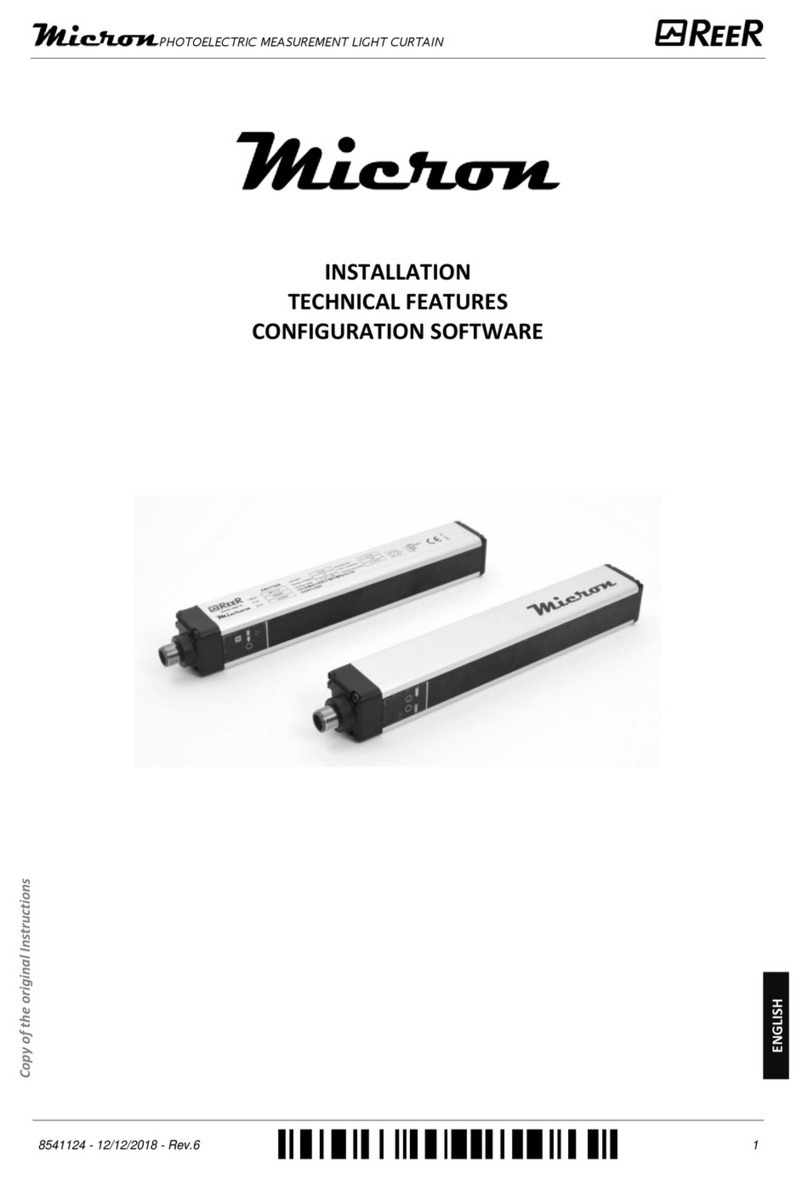
Reer
Reer Micron Series INSTALLATION, TECHNICAL FEATURES, CONFIGURATION SOFTWARE
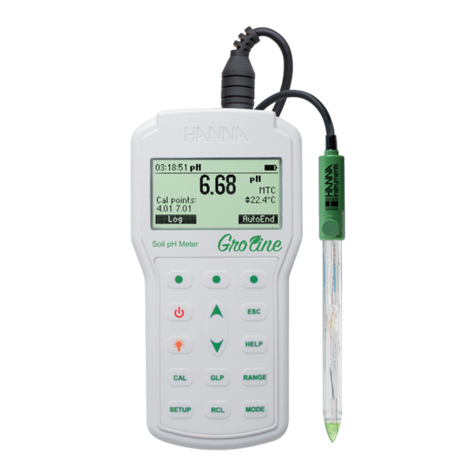
Hanna Instruments
Hanna Instruments GroLine HI98168 instruction manual
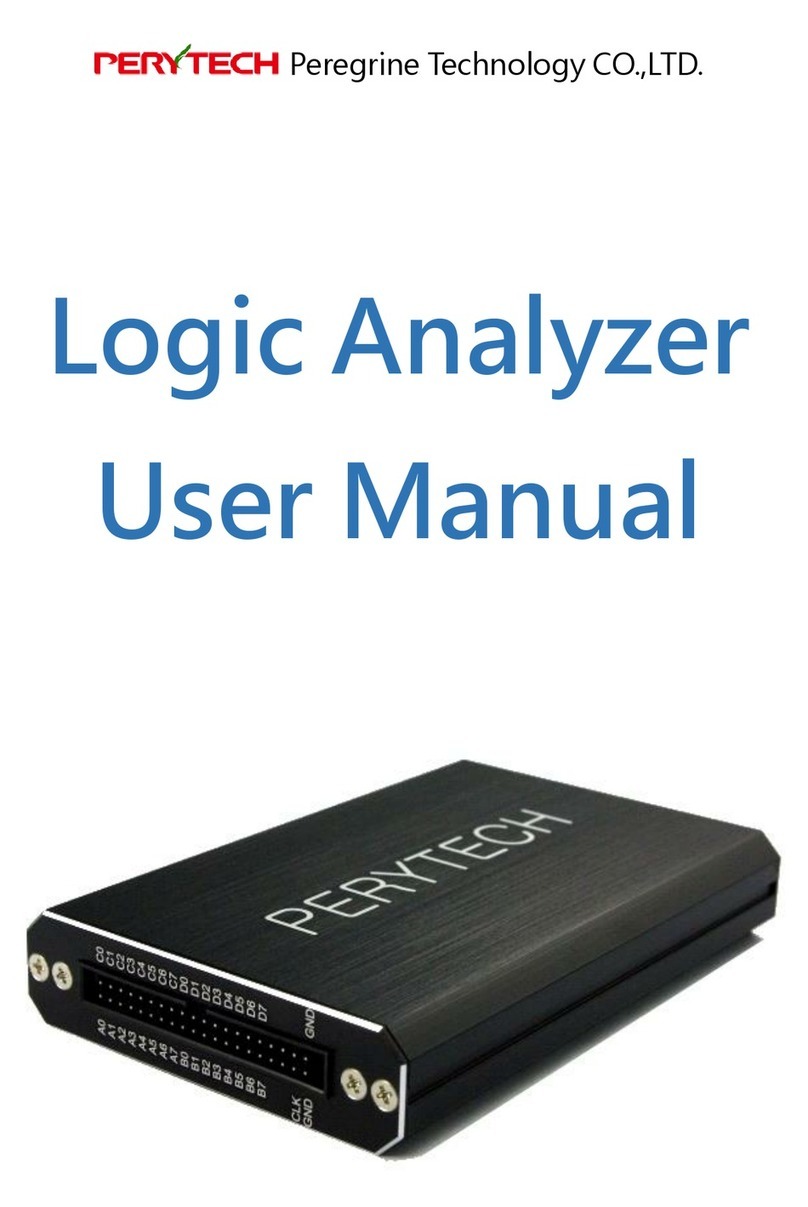
Perytech
Perytech PLA-1664 user manual
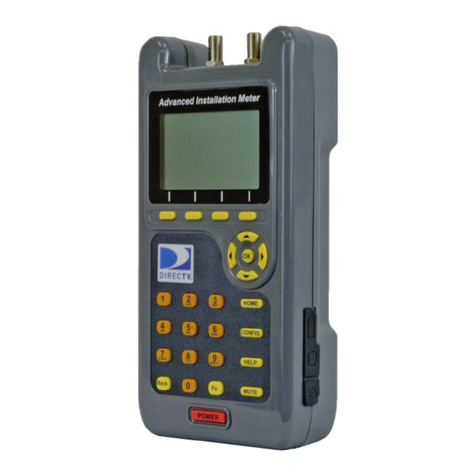
DirecTV
DirecTV Advanced Installation Meter user manual
